Meet Hugh Ashton: The UK's leading Sherlock Holmes writer who also has many more strings to his bow
This article contains affiliate links. We may earn a small commission on items purchased through this article, but that does not affect our editorial judgement.
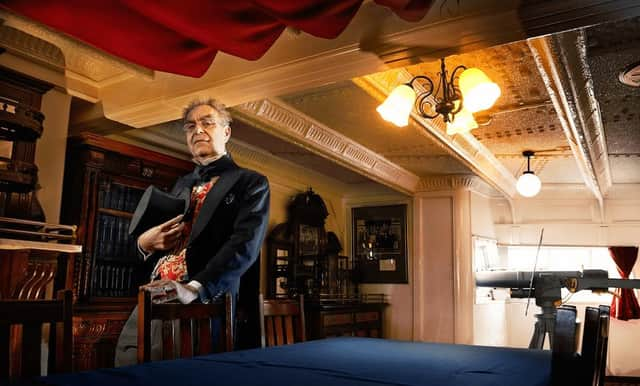

He’s best known for his spot-on pastiches of Sherlock Holmes adventures, but as Timothy Arden discovers, author Hugh Ashton is also an astonishingly versatile writer of thrillers and speculative fiction
There’s a spot on the small, offshore island of Enoshima in Japan that British author Hugh Ashton describes as “my own Reichenbach Falls”.
The causeway is the scene of the dramatic showdown in his novel At the Sharpe End, and the connection refers to the Swiss location where Sir Arthur Conan Doyle set the final face-off between his two most enduring fictional creations, the great detective Sherlock Holmes and his nefarious archenemy, Professor Moriarty.
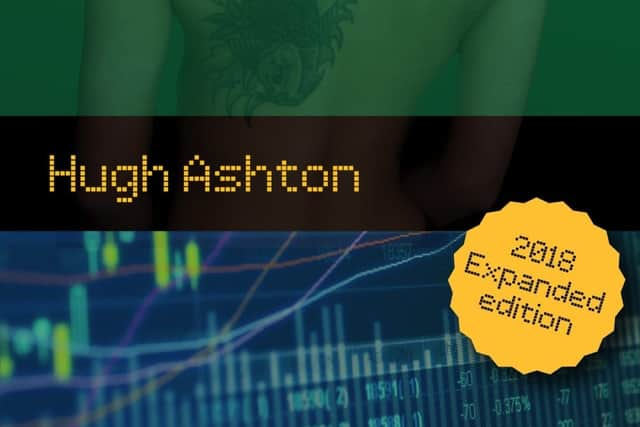

The comment is mentioned because it provides a perfect insight into two of the driving forces of this prolific, multi-genre writer: he has an intimate knowledge of Japan, and has established himself as one of the world’s leading proponents of Sherlock Holmes pastiches.
“That causeway at Fujisawa was close to where I lived – and I could never walk past it without thinking of the scene in Holmes,” says Hugh, whose output spans historical science-fiction, alternative history, thrillers, literary fiction and children’s stories.
At the Sharpe End, first published in 2010, is a fast-paced technological thriller set against the background of the 2008 global crash. Like much of the author’s work, it draws on his personal and professional experiences of living in Japan for more than 25 years; in this instance, displaying his knowledge of the IT sector within the financial services industry.
Following the fortunes of tech consultant Kenneth Sharpe, employed in the “vast metropolitan anthill” of Tokyo, the story includes an eclectic cast of multinational characters ranging from a British civil servant and a rogue intelligence agent to an Indian IT consultant and a North Korean gangster boss.
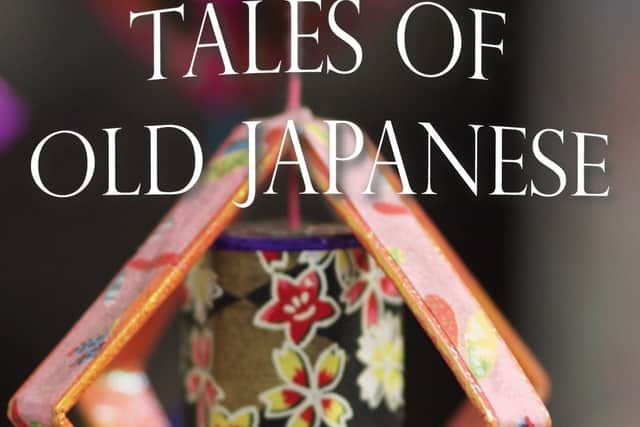

Hugh does admit that his “brushes with such ‘yakuza’ criminals have thankfully been few”, but he drew on material collected by friends, including best-selling writer and journalist Robert Whiting, author of Tokyo Underworld: The Fast Times and Hard Life of an American Gangster in Japan, who also provided the novel’s foreword.
Similarly, a conversation in the story in which a former Lehman Brothers employee shares his view of the post-collapse negotiations is based on a similar exchange Hugh had with a banker in the bar of the Foreign Correspondents’ Club of Japan (which also appears as a location in the book).
“Beneath the glitter and glamour, Kenneth Sharpe soon finds that there is a dark underbelly to this city,” says Hugh of his protagonist who, having been handed a piece of high-tech kit by a stranger, finds himself drawn into a battle with the titans of Wall Street.
The book was praised by reviewers for its plotting and characterisation, as well as for providing an “insider’s” look at contemporary Japanese society.


“I was keen to avoid the clichés of cherry blossoms, geisha and manga,” explains Hugh, who lived in Japan between 1988 and 2016.
Personal experience and real-life events also conditioned 2012’s Tales of Old Japanese, a collection of five literary short stories which all have their roots in events, people or places experienced by Hugh first-hand. The book has received acclaim for its emotional yet unsentimental portrayal of Japan’s ‘silver generation’, and brings home the fact that though set in the epitome of a foreign culture, there is a deeper humanity that connects us all.
For example, ‘Keiko’s House’ –a tale delving into how WWII and the American bombing of Japanese cities affected those living there–is based around the property where Hugh’s wife Yoshiko grew up, and which the couple inherited on the death of her parents. While both were living in Japan, the pair were originally introduced by letter through a friend of a friend, only to discover Yoshiko had, in fact, lived in Cambridge at the same time Hugh was living there, following his graduation some years earlier from Christ’s College.
It was Hugh’s long-standing interest in Japan which first prompted him to study its language at evening classes and later took him there, initially working for a sub-contractor of Yamaha, writing and producing manuals for audio products.
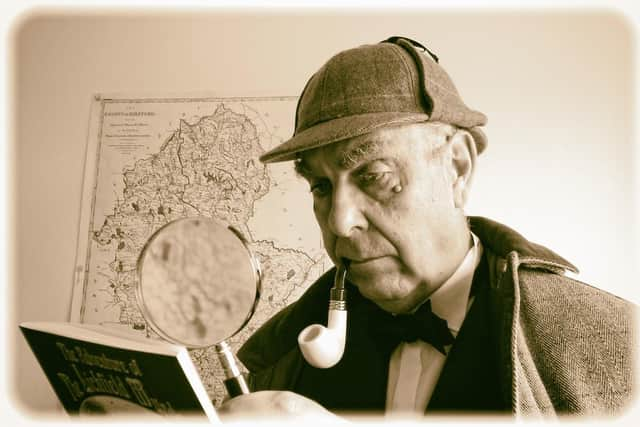

Looking back on his student days, he jokes that the “mediocre” degree he graduated with in Philosophy would have been better had he not spent so much time playing bass guitar.
For an author so adept at turning personal experiences into compelling fictitious material, however, it’s perhaps no surprise that music features prominently in the thriller Leo’s Luck, published in 2015. As Hugh so neatly describes it, this off-beat novel combines a heady cocktail of “disorganized crime, a little romance, and the paranormal”.
Having played bass and keyboards during the 1970s and early ‘80s, including a band called Doctor Skull and the Crossbones (they had a big biker following, apparently) and having also produced demo tapes and singles for groups including the Dogma Cats and Ersatz (some of which were played on John Peel’s radio show and featured on BBC TV), Hugh utilised his experiences of the music biz for this “rock ‘n’ roll romp”. In it, the titular anti-hero works as a roadie for a cult band and heads to Japan with them after embezzling £3,000,000 from the bank where he used to work. There’s more to the group than meets the eye, while Leo also has an astonishing secret talent which will be needed when the yakuza become involved.
The book prompted the author of Tokyo Vice, Jake Adelstein, to comment that Hugh “captures the subtleties and strangeness of Japan’s megalopolis as only a long-term veteran could” and it includes what’s got to be one of the most memorably-named bands in fiction – The Killer Rabbits.
As with his other works, though, Hugh is keen to point out that it’s not autobiographical. In an era when confessional books proliferate, all too often – with the exception of the fantasy genre – a writer’s output can be taken as such.
“Yes, I know Japanese society reasonably well and, yes, I’ve played in rock bands so I can still tell the difference between the sound of a Telecaster and a Stratocaster,” he says. “Yes, I’ve been involved in parapsychology and experienced many strange things I can’t explain… but how many people reading Macbeth assume Shakespeare was a regicide and a mass murderer? My main aim with writing is simply to entertain.
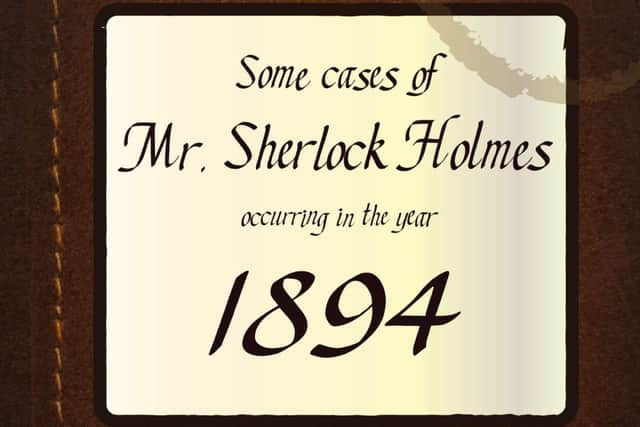

“Leo was written in an almost frivolous mood but, on re-reading it, I have discovered one or two passages that have a deeper resonance than was originally consciously intended. In many ways, this has become one of my favourite books.”
Creating such colourful characters as Kenneth Sharpe and Leo has allowed Hugh to flex his creative muscles, but other forms of invention and ingenuity are required to produce his celebrated Sherlock Holmes pastiches.
The impetus for the detective’s further adventures was originally sparked when Hugh, a life-long Holmes devotee, was playing Cluedo (what else?) with a friend and his daughters. Apropos of nothing in particular, he asked the question: “We all know about Sherlock Holmes’ smarter older brother, Mycroft, but what about his smarter younger sister?”
The answer came soon after with ‘The Odessa Business’. Hugh’s first pastiche, penned within a matter of days, it introduced the world to Evadne Holmes, an invention of Hugh’s. The story was initially self-published on the e-book-distribution platform Smashwords to strong reviews, and was followed rapidly by ‘The Missing Matchbox’. Like the majority of the pastiches—there have been 35 short stories and two novellas to date—the idea for the latter story comes from a passing reference in one of the official Holmes stories written by Sir Arthur Conan Doyle, ‘The Problem of Thor Bridge’. It lays bare the facts in the remarkable case of duellist and journalist Isadora Persano, who is found insane along with a matchbox containing a “remarkable worm, said to be unknown to science”.
His then-publisher, US-based Inknbeans Press, who at the time were preparing to bring out Tales of Old Japanese, were so impressed by the tales that they decided to publish them, along with a third pastiche, ‘The Case of the Cormorant’, in 2012’s Tales from the Deed Box of John H. Watson M.D.
They are all new stories but are written and produced in the same authentic style as the originals, even down to the use of 19th-Century typography in the printed editions.
Further adventures have been collected together in Hugh’s ‘Deed Box’ and ‘Dispatch-box’ series and have garnered widespread praise from the Sherlockian community, even leading to him being dubbed “the reincarnation of Sir Arthur Conan Doyle”.
He says he was first drawn to Holmes as a child: “My love affair with the great detective started when I was about 11 years old, and my grandmother presented me with what I remember to be the whole Canon, in addition to the Adrian Conan Doyle/John Dickson Carr pastiches. I made no distinction between the two.
“Then there was the masterly way with which Sherlock Holmes, armed with brains and physical courage, pitted himself against the villains. A combination of Hercule Poirot’s little grey cells and Richard Hannay’s physical and moral strength that has hardly, if ever, been equalled.”
The volume 1894, released last year, is a favourite of many, recounting five tales mentioned by Holmes’s invaluable assistant Dr Watson in Conan Doyle’s ‘The Golden Pince-Nez’ , all of which take place in 1894, and one mentioned in ‘The Retired Colourman’.
“On re-reading these stories, which largely wrote themselves, I am struck by them as being more than the simple detective stories that I imagined I had written,” Hugh adds.
“Anti-Semitism, snobbery, intolerance of religious belief, gender equality, and terrorism all make appearances in these stories which, while firmly rooted in 19th-century London, can still find echoes in today’s society.”
Hugh is now based in Lichfield, Staffordshire, where he works as an associate with a London-based firm that provides digital forensic and security services, and somehow finds time to study for a Master’s degree with the Open University in forensic psychology.
He called upon his home city as the setting for ‘The Adventure of the Lichfield Murder’, and Holmes will soon be venturing to nearby Rugeley to investigate a ghost in ‘The Bloody Steps’, which is actually based on a local legend.
In 2017, following the death of the owner of Inknbeans Press, he reclaimed the rights to his titles, and republished them under his own imprint, j-views Publishing, to maintain the books’ momentum.
This has been the latest chapter in the story of a singular author whose prodigious output ranges from a vision of a world in which the American Civil War never happened (Beneath Gray Skies) to the Sherlock Ferret series of children’s books featuring Moriarty Magpie and Pablo Pigasso [sic], with accompanying artwork by illustrator Andy Boerger.
Perhaps it’s unsurprising that a man with such a fascinating background has created such vivid and compelling characters. Hugh’s CV includes everything from a stint as a night guard with a security company and running microcomputers for the NHS to working with Japan’s first commercial Internet service provider and acting as a disaster recovery consultant with international financial service institutions.
“One of the joys of living as a migrant is that you meet people from other countries and cultures,” he says.
Despite the sometimes “nerdy” and technical nature of some of his day-jobs, Hugh has always maintained his interest in—and commitment to—fiction, guaranteeing his reputation and prompting fans to eagerly await new work.
It’s fitting, too, that he has another, albeit coincidental, link to the great fictional detective from whom he has drawn so much inspiration: his maternal grandmother’s maiden name was Watson.
All of Hugh Ashton’s books are available to purchase on his website and from Amazon UK. Tales of Old Japanese is priced £5.99 in paperback and £2.49 as an eBook; At the Sharpe End is priced £14.99 as a paperback and £4.21 as an eBook; Leo’s Luck is priced £7.49 in paperback and £3.01 as an eBook; and 1894: Some Adventures of Mr. Sherlock Holmes is priced £7.49 in paperback and £2.99 as an eBook.
Exclusive Q&A with Hugh Ashton
We chat to prolific author Hugh Ashton about his love of Sherlock Holmes, writing habits and new role as a publisher, among many other things.
Q. Your books were previously released through the American publisher Inknbeans Press, but this came to a sad and abrupt end with the death of the owner, Jo Lowe, in 2017. How did the loss of your publisher affect you, and how have you bounced back?
A. Jo was much more than a publisher or an editor. She made me feel (as she did all her authors) that I was special and very dear to her, and that my ideas were worth taking forward into publication. We chatted (usually text chats because her illness made it difficult for her to speak, especially towards the end of her life) almost every day when I was in Japan—the time differences made this convenient for us both—and we continued this friendship after I moved back to the UK. She helped me through an emotional rough patch and was a great support to me in many ways. I was devastated on a personal level when I heard of her death via email from another ‘Bean’ (Jo’s term for her Inknbeans authors) at 2am on Christmas morning 2017 and I still mourn a guide, philosopher, and friend.
On a professional level, I worked swiftly to recover the copyright and rights to publish, and immediately started to put them out under my own imprint. Since I’d done the layout and the covers for my books published under the Inknbeans label, I already owned the basics of the text and the artwork, and all I had to do (!) was to get some ISBNs, change the logo and the cover page, etc. But even with that head start, it’s not that easy to produce and market books on your own.
Q. You are now regarded as one of the world’s leading Sherlock Holmes pastiche authors. What made you decide to carry on Holmes’ adventures where his creator, Sir Arthur Conan Doyle, left off?
A. The image of Sherlock Holmes is, to use a much overused word, iconic: pipe, deerstalker and all. But the wonderful thing for an author about the original Canon is that Watson mentions so many different stories in tantalising detail. Who could resist writing a story about “Isadora Persano, the well-known journalist and duelist who was found stark staring mad, with a matchbox on the table in front of him containing a remarkable worm, said to be unknown to science”? I couldn’t.
Q. You have written over 30 Sherlock Holmes short stories and novels to date. How do you continue to find fresh, yet reverential, ideas for your pastiches’ plots? Do you approach writing a pastiche differently than writing any other form of fiction?
A. The Canon provides a springboard for ideas, if not plots. I’ve always considered myself to have a criminal mind, though I lack criminal tendencies. The same has been said of good detectives, and indeed in one story I make Holmes explain to Watson why he rejected the dark side, to use an anachronism, explaining that he preferred solving puzzles to setting them. I set them and solve them in my adventures. Or rather, they set themselves. I can start a story with no idea of how it will develop, other than a few cryptic words from the Canon. A client comes to 221b, explains his or her problem, and I’m off, watching Holmes and Watson as they seek to untangle the mystery set before them. I try never to lose sight of the quotation that “other detectives have cases, Sherlock Holmes has adventures” (Steven Moffat, co-author of the BBC SHERLOCK series).
I find it very easy to slip into Arthur Conan Doyle’s shoes and write in a style that imitates his, but more often, it’s my identification with and knowledge of the characters that means that I don’t lose touch with the originals, rather than a mechanical duplication of stylistic tricks. Unlike Sir Arthur, I don’t believe in Spiritualism, so I doubt that I am channelling him, but I do feel a certain empathy with him in many ways.
Q. It’s been over 130 years since the publication of the first Sherlock Holmes story. The world has moved on a long way since then, so what do you think is the secret of the consulting detective’s enduring appeal?
A. Holmes is a fascinating character, and his relationship with Watson has been described as one of the greatest friendships in English literature. The stories present little puzzles for the reader to solve but, at the same time, Holmes and Watson both evolve as characters in a way that many fictional detectives do not (I’m thinking of Hercule Poirot here, for example). Doyle loved throwing in little random facts to expand his character. Did you realise that Holmes’ famous violin was a Stradivarius, which he boasted of having bought for next to nothing from a second-hand shop? Or that he had published work on coal-tar derivatives? Or that he was descended from the French artist Vernet? Every little aspect of Holmes that Doyle chose to give us rounds him out a little further.
And let’s not ignore Watson. He also develops his character and unintentionally tells us a lot about himself as we read his words. He’s far from being a brainless dunce, and he is an admirable friend to Holmes; much more than the sounding board that many lesser fictional detectives have assigned to them.
Q. You lived for many years in Japan. What would you say are the biggest differences between the Japanese and Western cultures? Was there any particular difference that presented a major culture shock for you?
A. In many ways, returning to England after 30 years was more of a shock than going to Japan. I left the UK in the Thatcher years, and life was in many ways simpler then. I like to say that when I left, “text” was a noun, not a verb, and a “mobile” was something you hung from a child’s bedroom ceiling. The Internet was unknown, of course.
But Japan is definitely different. The whole office culture is much more rigid, and as a freelance consultant I found myself used as a double outsider in internal corporate politics. As a foreigner I was allowed to speak my mind, and as an outsider from the company I was presumed not to be taking sides in office civil wars.
I loved a lot of the traditional culture. I hold certificates in tea ceremony and in an interesting sword martial art called iaidō which involves drawing a katana (long sword), killing the enemy(ies) with one blow and shaking the blood off before re-sheathing the sword. Obviously all this is done as a kata against imaginary opponents, but every movement, just as in tea, must be done perfectly.
I also loved the high-tech aspect of Japan, working with people developing really cutting-edge technology, but there is a lot of frustrating low-tech as well: wooden stamps (seals) take the place of signatures; banking is frustratingly backward; faxes are used long after they’ve died the death elsewhere; and many jobs are done by hand which have long since been automated in the West.
Q. With respect to your Japanese thrillers, At the Sharpe End and Leo’s Luck, how much of their plots and characters are based on your own personal experiences?
A. The plots are not based on my personal experiences, but they are in a way extrapolations of what I have learned about Japan and about people there. For example, I’ve never tangled with the Japanese yakuza gangsters, but I have met gang bosses, and a friend of mine, Jake Adelstein, is a world expert on the gangs. The technology in Sharpe is interesting and in some ways prophetic. It foresaw some future trends in high-speed automated trading, and there’s also an interesting coincidence with the name of one of the characters, who shares it with a real-life banker in Michael Lewis’ The Fast Boys (published long after my book). Incidentally, the original draft of Sharpe included an earthquake and a nuclear disaster, but by the time the book came to be published, the quake hadn’t happened, but the bank crash had. Foretelling a quake in Japan is no great feat, and placing nuclear reactors on seismic fault lines strikes me as being a stupid idea, so I can’t claim prophetic powers there. Anyway, I include part of the quake version as an appendix.
The technology in Leo is fantasy but some of the underpinnings are based on my experiences as a one-time member of the Society for Psychical Research. Oh dear, another link with Conan Doyle!
But I have worked in the IT departments in big banks, I have played in rock bands (and even had records I’ve played on and produced played by John Peel), and I have lived in Japan and come into contact with some movers and shakers in Japanese society. Without these experiences, these books would never have been written.
Some of the humdrum details of life as a migrant in Japan have been praised by other foreign residents of Japan as being accurate. I believe that the little details can make all the difference and that way, when you slip a bit of imaginative fantasy into the mix, people are much more willing to accept it. And I even slipped my experiences with iaidō into the story.
Q. With over 30 published books under your belt, you are certainly a prolific author. How much preparatory research do you put into each new title, and how do you find the time to write so many books?
A. I write fast. My record was a 9,000-word Holmes adventure written in a single day. I also write as a first draft very much what will finally end up on the printed page. Of course I edit, but first thoughts often turn out to be best.
Writing is a job for me. I can sit down and write. Not always as fast as I would like, but yes, I can keep a story going. I think of myself as a craftsman, not an artist. Craftsmen usually can’t afford the luxury of second thoughts. The final output from an artist is often nothing but second, third, or fourth thoughts. But would you feel comfortable sitting in a chair designed by Salvador Dali?
Research? Done on the fly, as I have a pretty good general knowledge, and I know quite a lot without going outside. The Internet is a great help, of course. But then my readers are much more knowledgeable than Doyle’s. He could mention a Japanese system of wrestling known as baritsu, and of course there is no such thing. The lack of continuity and the factual errors in them are quite amazing. The names of the ‘Four’ in the Sherlock adventure ‘The Sign of the Four’ for example. I could never get away with Doyle’s sloppiness. So yes, research, but typically as I go along, and if I can’t find what I need to back my writing, then I have to leave that part out of the story.
Q. Are there any books that you have written but as yet remain unpublished?
A. I’ve been working on an alternative history set in 1918 Siberia for some time. It features some of the same characters as Beneath Gray Skies and its sequel, Red Wheels Turning, and it deals with the Intervention. It will get finished one day.
I’m also working on a Sherlock Holmes novella, which deals with “the Netherland-Sumatra Company and of the colossal schemes of Baron Maupertuis” which Watson deemed “too recent in the minds of the public, and too intimately concerned with politics and finance, to be a fitting subject for this series of sketches”. Baron Maupertuis has become a sort of late Victorian Blofeld here, and indeed his schemes are colossal.
There’s also a very bad PI novel which will never see the light of day, and quite a lot of short story beginnings which may or may not be expanded.
Q. The self-publishing imprint you established, j-views Publishing, recently released three novels by another author, Jim McGrath. How did that come about and how have you found the experience of acting as publisher for another’s titles?
A. Jim and I belong to the same writing group, Lichfield Writers (I published a round-robin police procedural by the group under the j-views Publishing imprint, The Lichfield Jigsaw Murders, and I have also published an edition of medieval plays entitled The Lichfield Mysteries by Robert Leach). Jim had previously published one of his Collins & Clark books as an eBook but, like me, the previous publication deal had gone away, and he therefore needed another outlet for his work. I was happy to take him on as another name in my list (I also have a book by Andy Boerger, The Angel Corps). Andy, an American living in Tokyo, is a friend with whom I produced my Sherlock Ferret series of children’s books (he did the pictures and I did the words).
Jim’s books follow the adventures of “the smallest policeman in Birmingham”, Clive Clarke VC (who, like Jim himself, is a Baggies supporter), and his partner, Michael Collins, a new recruit from Dublin, as they take on petty crime and the Birmingham and Black Country underworld in the 1960s. They are great characters who grow throughout the series and are far from static cardboard figures, and Jim tells an exciting multi-layered story in all these books. There’s language and some violence in these stories—they’re fairly adult—and they’re also a guide to Black Country dialect! The three books already published: A Death in Winter: 1963, A Death in Summer: 1965, and A Death in Spring: 1968 are actually going to be joined by others; they’re not a complete trilogy.
I get a great sense of satisfaction from turning other people’s work into a book. Recently I was sent a manuscript which showed great potential, but sadly wasn’t ready for publication. I’ve been working with the author to help it flow and read more easily. In a way, being an editor is like being a producer in a recording studio. Maybe you can’t play the saxophone yourself, but you know when someone plays it wrong, and you know what they are aiming towards and you encourage them gently and with sensitivity to achieve the best performance possible without making the finished product too much your own. Your job as producer or editor is to bring out the best from the raw material; cutting and polishing gems, if you like.
Q. As both author and publisher, what are your plans for the future?
A. As publisher I am interested in crime/thrillers from other people, especially those with a West Midlands flavour. Although I have a fairly international background and friends in five continents I feel I am coming back to my roots here in the Midlands. However, I have limited resources of time and energy, so I’m going to be quite selective in what I accept . If you submit, and then get a rejection letter from me, it says more about me and my current circumstances than it does about your writing.
As an author I want to equal Conan Doyle’s total of 56 short Sherlock Holmes stories and four novellas in the next few years, I hope. I have two pastiches set for release this year, including ‘The Bloody Steps’, where Holmes investigates sightings of a ghost in Rugeley, which is close to Lichfield, where I live.
I’m intrigued by the idea of science fiction set in the past, as in my two Untime books, and Angels Unawares. And recently I’ve been writing short stories (less than 1,000 words) with a semi-horror flavour. Decisions, decisions…there are only so many hours in a day.
I believe that some of my non-Sherlockian stories would transfer well to the screen (cinema or mini-series TV) and I would love to see Sharpe, for example, done as a "Tokyo noir" production.
Featured image: Irwin Wong